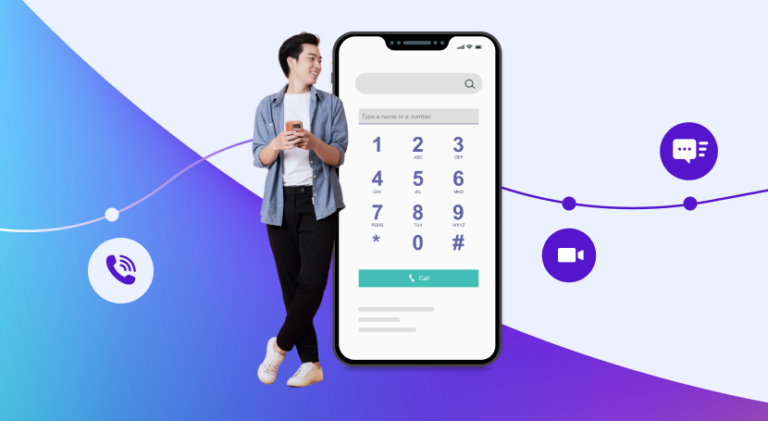Discover how cloud communications tech including contact centre solutions and communication APIs are empowering retailers to deliver personalised experiences and shape the future of retail.
Reducing no-show rates in healthcare using SMS
I recently came across some articles on the issue of “no-shows” or “Failure to Attend” (FTA) incidents in the healthcare industry. Part of my remit is thinking about different use cases for contextual and programmatic communications.
The problem of no-shows in the healthcare industry is not new. For many years, FTAs have hurt healthcare cost trends. On the delivery side of the equation, providers face lost revenue, inefficiency, and a tendency to overbook their calendars to combat FTAs. For patients, clinical outcome quality declines when they miss checkups and critical medical procedures. In extreme cases, patients may face reduced access to care if providers refuse service to repeat no-shows, punishing them for being “bad patients.”
While there are several ways to improve the situation, we will look at how to use communication technology, widely available and underutilized, in the effort to reduce FTAs. Specifically, we will talk about cloud-based programmable communications and how they can make it easier than ever to reduce the costs of FTAs while also improving the patient experience.
The cost of no-shows
Estimates suggest that FTAs comprise an average of 12% of daily appointments for even the most well-run of practices. Some medical practices experience a jaw-dropping 50% daily cancellation rate. Appointment cancellation rates are a systemic problem in addiction treatment centers where 29% – 42% of patients fail to begin treatment and 15% – 50% of patients do not even return for a second visit.
There is more to this effect on the financial cost trend for providers and the healthcare system, overall. There is also a significant negative impact on health outcomes for patients.
Missed preventive care appointments lead to prolonged and more expensive episodes of care when health problems outwardly manifest themselves or result in trips to the emergency room. Regular checkups and screening are vital to addressing health issues, as early as possible.
In short, FTAs are bad for everyone.
Old habits die hard
Many medical practices do not use the latest computers or programs to manage patient appointments. In some cases, clinics schedule appointments in a paper and pencil diary. Others may use computer-based applications or email to communicate and schedule appointments. Patients often receive a paper slip when they leave the doctor’s office, with their next appointment written on it.
Today, many of us live in a world dominated by smartphones and rapidly changing technologies. We rely on our mobile devices to handle most aspects of our day-to-day scheduling, with a variety of calendar and messaging apps being our notification systems. If we forget to enter that doctor’s appointment in our electronic calendar, this becomes the first chance for a no-show.
In many cases, patient reminders do happen: Via phone call, one or two days before the appointment, by email or by postal mail if far enough in advance. Still, this requires extra effort for clinicians to do this regularly.
So, how can we improve on this old school approach using some modern technology and address the growing no-show problem?
The humble SMS
There has been much research conducted to look at how people around the world communicate.
As of September 2019, 66.53% of the entire world population owns a mobile device. Essentially, there is a device for every working adult in the world. Within that extensive group, the Short Message Service (a.k.a. “SMS” or “text message”) is the predominant communication mode, due to its accessibility and cost.
Out here in Southeast Asia, you will also find the two countries with the highest text messaging usage rates in the world: the Philippines and Indonesia.
Furthermore, research shows that SMS messages are far more likely to be read than emails sent from tools like MailChimp.
The market for SMS is still growing, though its ubiquity and accessibility now make it a commodity. Over the last few years, other internet protocol (IP) based messaging services have gained traction. Here, we are talking about apps like WhatsApp, Apple’s Facetime, Facebook Messenger, Viber, and others.
There’s no reason to feel sorry for your local mobile operator or telco, however. All of this means that these companies no longer make tons of money by selling SMS as premium service.
While IP-based messaging apps are often (sort of) free for end-users to access, they each aim to build their own, segregated ecosystems. Monetization comes in the form of advertising, or by charging businesses to use their services for commercial purposes, or to integrate their capabilities into other systems.
Overall, the takeaway here is that the humble SMS is very widely used and accepted as a mode of communicating timely information. It should be considered a reliable method of communication, and it is more cost-effective for businesses to use than other types of messaging services.
Back to our no-shows
Bringing these findings back to the issue of no-shows or FTAs, the use of SMS to improve healthcare delivery and reduce the costs associated with no-shows is a significant opportunity. Again, the use of SMS messaging this way is not a new idea. Others agreed long ago that using SMS helps reduce no-shows.
So what’s changed? Over the last 3-5 years, the Communication Platforms as a Service (CPaaS) sector has grown by enabling the use of telecommunications technologies for use cases far outside the bounds of typical personal and business communications.
Application-to-Person (A2P) messaging to deliver One-Time Passwords (OTP) for secure transactions have become part of our everyday lives. This is also a prime example of how the use of SMS has become easy to deliver, programmatically.
Still, that is just a start. There is much more one can do with these new technologies, and our problem with no-shows is a strong use case.
SMS messages can now be sent, automatically, at scheduled intervals or relative to a patient appointment date and time. Personalization can be done with the use of in-message variables to include the patient name, the provider name, the appointment date & time, and more.
Security and privacy are a concern when dealing with patient data. SMS’s can also include links to secure web pages. Patients can log in to confirm or reschedule appointments, or to submit questions and documentation in advance of their visits to the doctor.
The lack of recipient confirmation could also trigger alerts and an automated voice call to the patient, supported via text-to-speech technologies.
Furthermore, providers and medical clinics do not need to invest in the latest computers or phone systems to take advantage of these services. Many of these services are accessible via a web browser.
Deepening engagement, building trust
Beyond this, an SMS messaging system presents an array of engagement opportunities designed to increase interaction while gaining insight and improving healthcare outcomes.
Advances in the field of artificial intelligence are well on the way to making medical diagnosis and treatment recommendations more automated and data-driven.
Some feel this evolution may take away healthcare practitioners’ jobs, even while lowering healthcare costs and improving access to care and overall quality of healthcare. On the other hand, these changes offer providers the opportunity to focus more on managing the human-to-human interactions and the complex emotional aspects of the patient experience.
SMS messaging can be used to augment this effort. During post-appointment timeframes, healthcare providers can send out SMS’s seeking patient feedback on how their recovery is going or allowing patients to rate their experience.
The use of SMS to drive these simple, short interactions, helps support the goals of deepening patient engagement and building trust.
Conclusion
Today’s cloud-based telephony and API-based communication platforms enable healthcare providers to quickly implement robust appointment reminder systems at scale and relatively low cost.
Leveraging the popularity of SMS messaging can help healthcare providers to cut down on no-show / FTA costs with the potential to improve health outcomes and the overall patient experience.
Toku empowers businesses to broaden customer engagement with our CPaaS solutions and standalone software products.
Healthcare providers can benefit from the following Toku solutions:
- Messaging APIs, including SMS texting and text-to-speech
- Our SMS Campaign Management Platform
 Ana Castrillon
Ana Castrillon 


 V K Sanjeed
V K Sanjeed 
 Girish Dharmaraj
Girish Dharmaraj 
 Nora Huin
Nora Huin